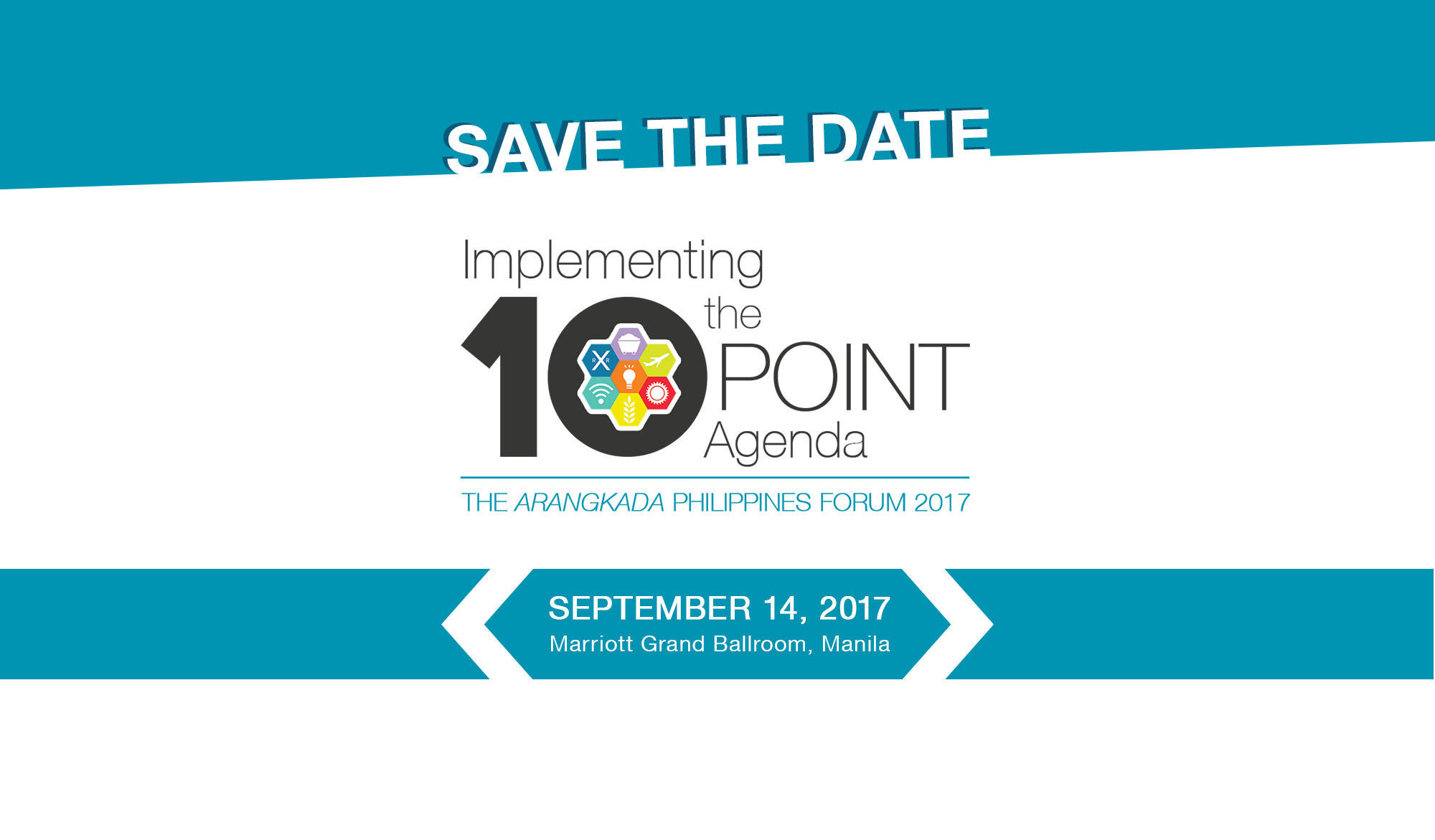DURING the Arangkada Forum on September 14, there was much focus on sectors with substantial growth potential—including agriculture, creative industries, ICT, manufacturing, mining, logistics and tourism. In my panel, we discussed agriculture, creative industries and tourism. Inclusive growth and raising the poor out of poverty through employment generation were issues raised by all panelists, given the fact that the high rate of poverty and the high number of poor citizens has been a persistent development challenge in the Philippines.
Within the Asean region, Malaysia and Thailand have nearly eliminated poverty below $1.25 a day in their countries, while Indonesia and Vietnam have made better progress in this indicator of development than the Philippines. These countries in past decades (to varying degrees) have had more economic growth, more investment and quality job creation, fewer national disasters and better political and policy stability than the Philippines.
In recent years, however, the Philippines is doing better. With consistent stronger economic growth, higher domestic and foreign investment, better governance and a declining population growth rate, the poverty rate is declining. The targeted rate of reduction of the Duterte administration is 1.5 percent per year so that the percentage of Filipinos in poverty in 2022 will decline to 17 percent.
According to the Philippine Statistics Authority, farmers and fishermen are among the poorest in the country: “Among the nine basic sectors, farmers, fishermen and children belonging to families with income below the official poverty threshold or poor families posted the highest poverty incidences in 2015 at 34.3 percent, 34 percent and 31.4 percent, respectively. These sectors consistently registered as the three sectors with the highest poverty incidence in 2006, 2009 and 2012. Also, 5 of the 9 basic sectors consisting of farmers, fishermen, children, self-employed, unpaid family workers and women, belonging to poor families had higher poverty incidence than the general population estimated at 21.6 percent in 2015.”
The poor are often hungry. Their diet is inadequate. Their children are frequently malnourished and stunted. In Metro Manila there are more than 300,000 families living without shelter and under bridges. These families need a massive improvement in nutrition. Urban farming is one of the options to address this and improve the learning capacity of poor children in school. Better nutrition needs to go hand-in-hand with the Conditional Cash Transfer (CCT) program, or the Pantawid Pamilyang Pilipino Program, implemented by the Department of Social Welfare and Development. CCT now assists 4.4 million households totaling 20 million Filipinos. The transfers are provided directly to recipients on the condition that their children are inoculated and participate in school feeding programs to combat childhood diseases and malnutrition. Total funding increased from P10 billion in 2010 to P79 billion in the 2017 budget.
Quite a number of recommendations were made at the Arangkada Forum to improve social-protection programs, including the government’s CCT program, to protect the poor (I selected a few).
Recommendations:
- Continue to reduce number of poor in absolute terms and as percentage of population.
- Continue to reduce the incidence of hunger.
- Expand insurance coverage to include more poor.
- Successfully implement expanded CCT program to include all 6.9 million poor
families. - Implement unemployment insurance as a social safety net.
- Enhance CCT program to ensure that the rights of poor children are upheld and to help child beneficiaries and their families to become more self-sufficient and self-reliant. (Urban farming is the way to go; the city of Quezon City is doing well along this line).
- Create jobs and economic opportunities. Job creation in the industrial, agricultural and service sectors will be facilitated by the government, in collaboration with the private sector.
- Implementation of national identifaiction card (ID) system for improved targeting of social services. Participants identified the pressing need to institute a national ID system that will allow government agencies to provide more targeted social services, and prevent double counting or leakage.
As the focus of my column is agribusiness, we need to deliver support services to farmers and fishermen, such as financing, incentives, technology, irrigation, post-harvest facilities, farm-to-market roads, improved logistics and integration in the supply chain to fully develop the potential of the agricultural industry to develop rural areas and the countryside.
As a consequence, some 20 million rural Filipinos can be lifted out of poverty. And the children of farmer will stop moving from rural areas to urban centers or become overseas Filipino workers. Isn’t this what the 10-point socioeconomic agenda of the Duterte administration has in mind? Fighting poverty in agriculture?

